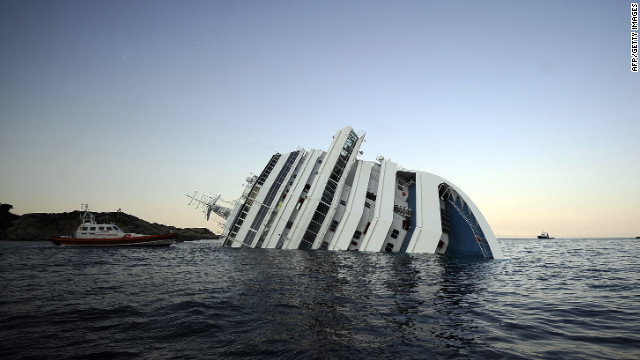The bridge was in use at the time, but apparently no vehicles were on the portion that went down (Photo AP):
Here's the ship's information page from MarineTraffic. Courtesy of the blog DieselDuck at Mariner, here's a cached blurb about the ship's work for NASA from Foss Maritime, the operator.
On investigators' to-do list will be these questions:
- Height of the river, given recent rains;
- Whether the ship was in the usual channel;
- Whether reconstruction of the bridge had changed anything;
- Whether all the bridge lights were illuminated; and
- The ship's navigational information, if recorded
Following an explosion, fire, collision, or allision like the Delta Mariner's, for a VDR panel like the one on the Astor, the important button is the one on the upper left. A crewmember has to know to go the panel immediately, raise the plastic guard, press the emergency-save button, and keep holding it down until it starts flashing.
Capt. Francesco Schettino of the Costa Concordia says that the VDR on his ship had been on the blink for 15 days, so the police won't find much in it. Perhaps it's true that the VDR had been problematic and that the crew had reported it to the operator, but in my quick scan of investigative shipping reports involving troubles with VDR records, I could only find one in which the VDR completely failed to record, and that was due to a glitch nobody had understood until the mishap. That was the European Pioneer; here's the MAIB report. In a few other VDR cases, some channels of information didn't record because a wire was loose.
But in the majority of cases the crew failed to activate the emergency backup button, so all the data was overwritten in the following hours. Human error has been the most common problem, and it was the subject of this marine advisory from Gard.
So to summarize, VDRs on ships have this important practical difference from Flight Data Recorders on aircraft. In a typical crash, the aircraft is demolished and the unit stops recording, so there's no danger of inadvertently overwriting pre-crash data.
Not so with most shipping incidents, in which the ship's power stays on for hours or even days. Unless instructed otherwise, the VDR continues to function, which means it saves only a few hours of data (the time span depends on the model) before overwriting the memory. Wait a few hours, and there's nothing useful to be had.






















